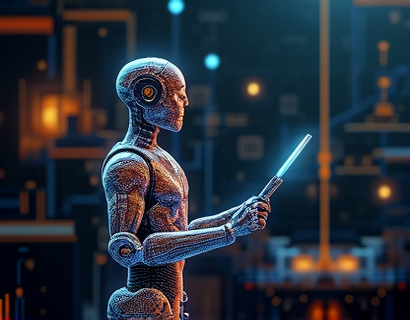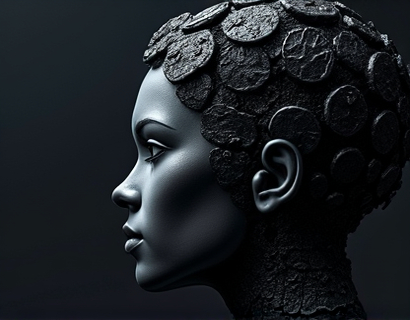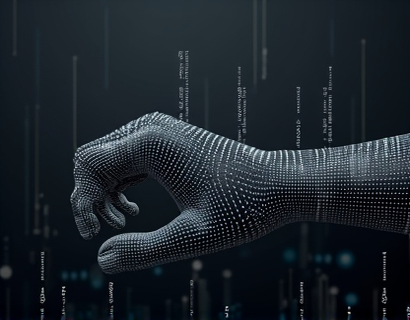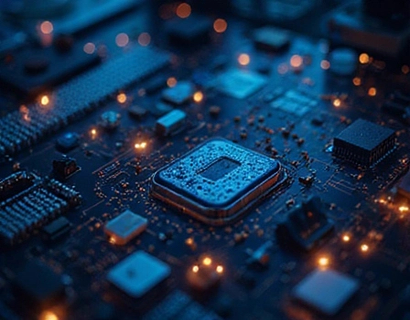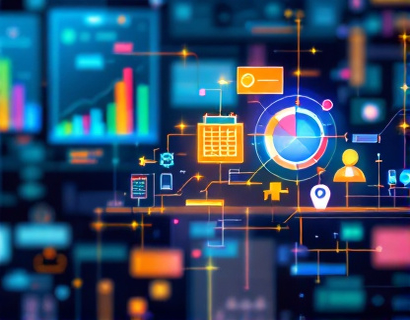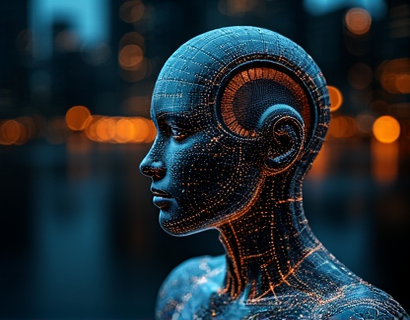Unlocking the Potential of Crypto and AI: A New Era for Digital Innovation
The intersection of cryptocurrency and artificial intelligence (AI) is giving rise to a new paradigm in digital technology, one that promises to transform how we interact online and access innovative applications. This merging of two cutting-edge fields is not just a trend but a fundamental shift in the way digital solutions are developed and utilized. For tech enthusiasts and early adopters, this convergence offers unprecedented opportunities to enhance their online presence and streamline their engagement with the latest tech advancements.
The integration of cryptocurrency and AI is creating advanced digital solutions that were once the stuff of science fiction. These solutions are not only more secure and efficient but also more personalized and accessible. The synergy between blockchain technology and machine learning is paving the way for a future where digital interactions are seamless, transparent, and highly intelligent.
Understanding the Basics: Cryptocurrency and AI
To fully appreciate the transformative impact of combining cryptocurrency and AI, it's essential to understand the fundamentals of each technology.
Cryptocurrency, often referred to as digital or virtual currency, uses cryptography for security and operates on a decentralized network known as a blockchain. This decentralized nature ensures that no single entity has control over the entire network, making transactions secure and transparent. Cryptocurrencies like Bitcoin, Ethereum, and others have already disrupted traditional financial systems by providing a new way to conduct transactions without intermediaries.
Artificial intelligence, on the other hand, involves the simulation of human intelligence processes by machines, particularly computer systems. These processes include learning (the acquisition of information and rules for using it), reasoning (using rules to reach approximate or definite conclusions), and self-correction. AI technologies such as machine learning, natural language processing, and computer vision are rapidly advancing, enabling machines to perform tasks that traditionally required human intervention.
The combination of these two technologies is leading to the development of smart contracts, decentralized applications (dApps), and autonomous systems that can operate with minimal human oversight. Smart contracts, for instance, are self-executing contracts with the terms of the agreement directly written into code. They run on blockchain networks and automatically enforce and execute the terms of the contract when predefined conditions are met. This not only reduces the need for intermediaries but also minimizes the risk of fraud and errors.
Enhancing Digital Engagement through AI-Driven Crypto Solutions
The fusion of AI and cryptocurrency is revolutionizing digital engagement by creating more intuitive, responsive, and secure online experiences. One of the key areas where this synergy is making a significant impact is in user interface and experience (UI/UX) design.
AI algorithms can analyze vast amounts of user data to understand preferences, behaviors, and patterns. This data can be used to personalize the user interface, making it more intuitive and user-friendly. For example, AI can dynamically adjust the layout and content of a webpage based on the user's past interactions, ensuring a tailored experience that enhances engagement and satisfaction.
Moreover, AI-powered chatbots and virtual assistants are becoming increasingly common in crypto platforms. These AI-driven tools can provide real-time support, answer queries, and guide users through complex processes such as trading and wallet management. The ability of AI to understand natural language makes these interactions seamless and efficient, reducing the learning curve for new users and improving overall user experience.
Streamlining Access to Crypto Applications
One of the most significant challenges in the crypto space is the complexity and steep learning curve associated with various applications and platforms. AI and cryptocurrency together offer solutions to streamline access and usage, making these technologies more accessible to a broader audience.
Wallet management is a prime example. Traditional cryptocurrency wallets can be cumbersome to use, requiring users to manage multiple keys and secure their private information. AI-driven wallets can automate many of these tasks, providing enhanced security features and user-friendly interfaces. For instance, AI can generate and manage complex password phrases, automatically update security protocols, and even alert users to potential security threats.
Another area where AI is making a difference is in the deployment and management of decentralized applications (dApps). AI can optimize the performance of dApps by predicting and mitigating network congestion, ensuring smooth and fast transactions. Additionally, AI can help in the development of more robust and secure smart contracts by identifying and rectifying potential vulnerabilities before deployment.
Security and Privacy: A Critical Focus
Security and privacy are paramount in the crypto and AI landscape. The combination of these technologies offers advanced solutions to protect user data and ensure the integrity of transactions.
AI can enhance security by detecting and preventing fraudulent activities in real-time. Machine learning algorithms can analyze transaction patterns and identify anomalies that may indicate malicious behavior. This proactive approach to security can significantly reduce the risk of hacks and cyberattacks, providing users with greater peace of mind.
Privacy is another critical aspect, and blockchain's inherent transparency can sometimes conflict with the need for user anonymity. AI can help strike a balance by implementing advanced encryption techniques and zero-knowledge proofs. These methods allow transactions to be verified without revealing sensitive information, ensuring that user privacy is maintained while still maintaining the integrity of the blockchain.
Innovative Use Cases: Beyond Currency
The potential of combining cryptocurrency and AI extends far beyond traditional currency transactions. This powerful combination is giving rise to innovative use cases across various industries, from supply chain management to healthcare and beyond.
In supply chain management, blockchain and AI can provide end-to-end transparency and traceability. AI can track and analyze data from various points in the supply chain, identifying bottlenecks, optimizing logistics, and ensuring product authenticity. This not only improves efficiency but also builds trust among stakeholders.
In healthcare, AI-driven blockchain solutions can secure and manage patient data, ensuring privacy and compliance with regulations while enabling seamless data sharing among healthcare providers. Smart contracts can automate insurance claims and drug distribution, reducing administrative costs and improving patient care.
Another exciting area is in the realm of digital identity. AI and blockchain can create secure and decentralized identity verification systems, giving individuals control over their personal data and reducing the risk of identity theft. This is particularly valuable in regions where traditional identity verification systems are weak or non-existent.
Challenges and Considerations
While the potential of combining cryptocurrency and AI is immense, there are several challenges and considerations that need to be addressed to fully realize this potential.
First, the technical complexity of integrating these technologies requires a skilled workforce. Developers and engineers need to have a deep understanding of both blockchain and AI to create robust and efficient solutions. This skills gap is a significant barrier to entry for many organizations.
Second, regulatory uncertainty remains a major hurdle. The crypto space is still navigating a complex web of regulations, and the addition of AI introduces new layers of complexity. Ensuring compliance with existing laws while advocating for supportive regulations is crucial for the sustainable growth of these technologies.
Third, there is the issue of scalability. As the adoption of crypto and AI solutions grows, the underlying infrastructure must be able to handle increasing loads without compromising performance. This requires continuous innovation and investment in scalable blockchain and AI technologies.
The Future: A Collaborative Ecosystem
The future of crypto and AI is bright, with the potential to create a collaborative ecosystem that benefits tech enthusiasts, early adopters, and the broader tech community. By fostering innovation and collaboration, we can overcome the current challenges and unlock the full potential of these transformative technologies.
For those looking to stay at the forefront of this revolution, engaging with communities, participating in research and development, and continuously learning about the latest advancements are key. The intersection of cryptocurrency and AI is not just a technological shift but a cultural one, reshaping how we think about digital engagement and innovation.
In conclusion, the merging of cryptocurrency and AI is more than just a technological trend; it's a fundamental transformation that is redefining the digital landscape. For tech enthusiasts and early adopters, embracing this change offers exciting opportunities to enhance their online presence and access cutting-edge applications. As we move forward, the synergy between these two fields will continue to drive innovation, creating a more secure, efficient, and personalized digital world.











